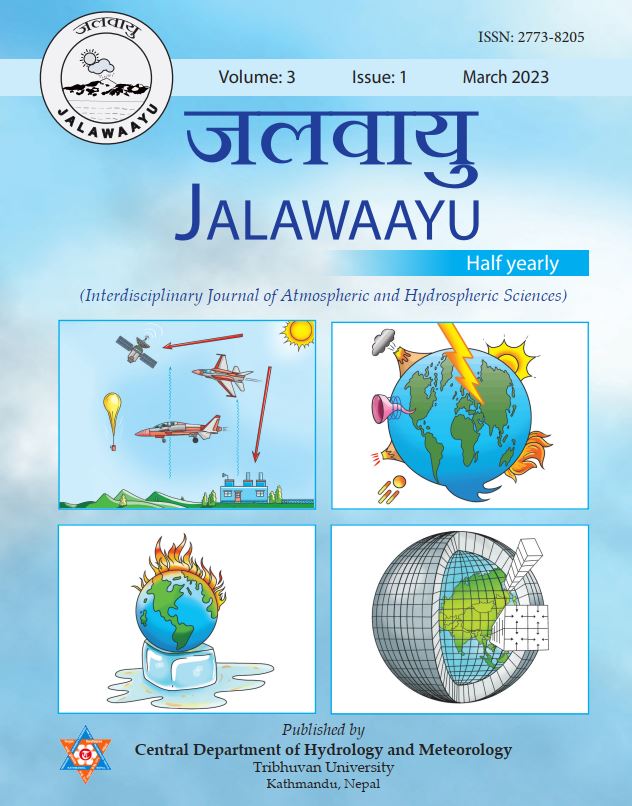A Meteorological Analysis from the Southern Slope of Mt. Everest, Nepal
DOI:
https://doi.org/10.3126/jalawaayu.v3i1.52069Keywords:
High Altitude Meteorology, Precipitation, Glacier, Mt. EverestAbstract
Mt. Everest is the highest mountain in the world, with an elevation ending at 8848.86 m above sea level, providing unique opportunity for direct observation of the upper troposphere. Utilizing the data from recently established five automatic weather stations (AWSs) network along the Everest climbing route, as part of the National Geographic and Rolex Perpetual Planet Expedition to Mount Everest 2019, from June 2019 to May 2020, this study investigates the meteorological environment over the southern slope of the Mt. Everest. Precipitation, temperature, radiations (income and outgoing short wave and long wave radiation), wind speed and direction along with derived variables like Lapse Rate, Precipitation Gradient, 6.11 hPa Isoline, and zero-degree Isotherm are analyzed with the aim of understanding altitudinal variation. Precipitation is mainly concentrated in monsoon with highest in Phortse (530 mm). Analysis of temperature lapse rate shows the highest lapse rate (-5.6 ℃ km-1) in monsoon and lowest in post-monsoon (-7℃ km-1). The precipitation analysis reveals that the vertical and horizontal precipitation gradient for monsoon is -63 mm km-1 and is -8.6 mm km-1 however, during the post-monsoon, precipitation increased by 0.75mm km-1 and 4.6 mm km-1, respectively. Similarly, westerly winds dominate during winter in upper station while it’s nearly uniform for lower stations. Radiation, likewise, are highly correlated between the stations, with incoming shortwave being the highest in the upper station, South-Col. Both isoline and isotherm lines are observed at around 6000 m above sea level. The one-year data has revealed some of the interesting pictures of high-altitude meteorology, but long-term data with fewer data gaps should be required to confirm these patterns.
Downloads
Downloads
Published
How to Cite
Issue
Section
License

This work is licensed under a Creative Commons Attribution 4.0 International License.
Copyright © of the articles is held by the authors.

